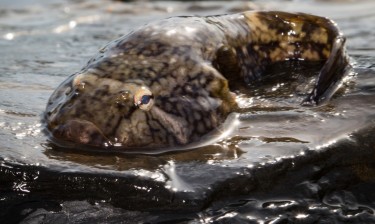
Researchers at the University of Washington’s Friday Harbor Laboratories are studying the Northern clingfish, a finger-sized fish that scoots around the coastal waters of Puget Sound and can use suction forces to hold up to 150 times its own body weight. They’re trying to better understand how clingfish summon such massive power in wet, slimy environments—something current industrial suction devices can’t do—and if the biomechanics of clingfish could be instructive in designing surgical instruments and, possibly, a new way to tag whales without puncturing their skin with darts. Clingfish have a disc on their bellies that’s covered in micro-sized, hairlike structures, creating a layered effect which enables them to stick onto surfaces with varying degrees of roughness. From a bio-inspired device that could stick to organs or tissues without harming the patient to a noninvasive tagging tool for monitoring whales, Petra Ditsche, a postdoctoral researcher at Friday Harbor Labs, has no shortage of specimens to look at—there are about 110 known species of clingfish and their population around the San Juan Islands is robust and healthy.
Read more at UW Today »
